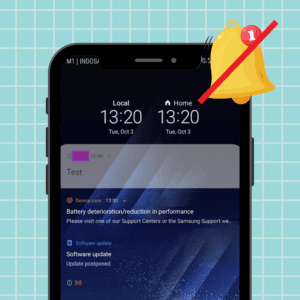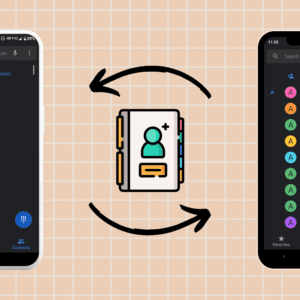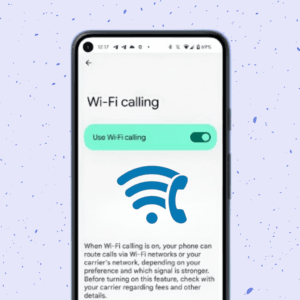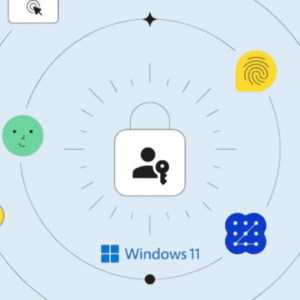We’ve all been there when our iPhone, iPad, Mac, or Apple TV starts streaming to a device where we didn’t intend to connect to. Maybe you were showing off your vacation photos on the living room TV, but now it’s time to get back to some privacy. Here’s a comprehensive guide on how to turn off AirPlay on your Apple devices. We’ll walk you through the steps to reclaim your screen on your iPhone, iPad, Mac, and Apple TV.
How to turn off AirPlay on iPhone and iPad
Sometimes, you need to stop streaming from your iPhone or iPad to another device, whether because you’re done watching a video on your TV or accidentally connected to the wrong screen. Fortunately, turning off AirPlay on an iPhone or iPad is straightforward. We’ll cover three methods here, ensuring you can easily disconnect from AirPlay using whichever method suits you best.
Method 1: Using Control Center
The Control Center is a quick-access menu that lets you control many aspects of your device, including AirPlay. This method is useful because it’s fast and accessible from almost any screen on your device. By swiping down or up (depending on your device model) and selecting the appropriate option, you can immediately stop your device from mirroring its screen or sending audio to another device.
1. Swipe down from the top-right corner of your screen (on iPhone X and later) or swipe up from the bottom of the screen (on iPhone 8 and earlier or iPad).
2. Tap the Screen Mirroring icon, which looks like two overlapping rectangles.
3. Select Stop Mirroring or Turn Off AirPlay from the list of available options.
Also read: How to use Genmoji on iOS 18.
Method 2: From the app currently playing media
Many apps that support AirPlay have built-in controls for managing playback on external devices. This method is not just handy, it’s also adaptable. It allows you to stop AirPlay directly from the currently streaming content app, whether you’re in Apple Music, YouTube, or another app. These steps will help you regain control, no matter where you are or what you’re doing.
1. Open the app that is currently playing media via AirPlay.
2. Look for the AirPlay icon, which usually looks like a triangle pointing into a rectangle.
3. Tap the AirPlay icon and select iPhone, iPad, or Stop Mirroring to turn off AirPlay.
Method 3: Using Settings
If you prefer a more permanent solution or want to stop AirPlay from automatically connecting in the future, you can turn it off through the Settings app. This method is beneficial because it allows you to prevent automatic AirPlay connections, providing a more long-term fix to unwanted streaming.
1. Open the Settings app and tap on General.
2. Select AirPlay & Handoff and turn off Automatically AirPlay to TVs or switch off AirPlay completely.
Also read: How to FaceTime on Android with Apple users.
How to turn off AirPlay on Mac
AirPlay can be a great feature for mirroring your screen or extending your display to another device when using a Mac. However, there are times when you need to turn off AirPlay, whether to preserve privacy or to troubleshoot connection issues. Here, I’ll explore three different methods for disabling AirPlay on a Mac, ensuring you can choose the one that best fits your workflow.
Method 1: Using the Menu Bar
The Menu Bar on your Mac provides a quick and easy way to control various system functions, including AirPlay. This method is ideal for users who want to quickly disable AirPlay without navigating through multiple settings. It’s convenient and always within reach, making it a favorite for many.
1. Find the AirPlay icon in the menu bar at the top of your screen. It looks like a rectangle with an arrow pointing up.
2. Click the AirPlay icon.
3. Select Turn AirPlay Off from the dropdown menu.
Also read: How to fix MacBook not outputting in high refresh rate to external monitor.
Method 2: From System Preferences
System Preferences is the hub for managing many of your Mac’s settings. Disabling AirPlay through System Preferences is a thorough approach, providing additional options and settings related to displays and screen sharing. This method is not just useful, it’s also reassuring. It ensures that you have a complete understanding of your Mac’s configuration, giving you a sense of security and control.
1. Click on the Apple menu in the top-left corner of your screen.
2. Select System Preferences.
3. Click on Displays and in the AirPlay Display dropdown menu, select Off.
Method 3: Using the Control Center (macOS Big Sur and later)
With macOS Big Sur and later versions, the Control Center brings your Mac a familiar, iOS-like control interface. This method is excellent for users who appreciate the streamlined access to various settings, including AirPlay, in one centralized location. It’s especially handy for those who are used to controlling their devices through the Control Center on iOS.
1. Click on the Control Center icon in the menu bar (it looks like a pair of toggles).
2. Head to Screen Mirroring and select Display Preferences.
3. Finally, choose Turn AirPlay Off.
Also read: Best hidden features of macOS Sequoia.
How to turn off AirPlay on Apple TV
AirPlay on Apple TV allows you to stream content from your other Apple devices to your TV, making it a fantastic feature for sharing media on a bigger screen. However, the process is simple if you need to turn off AirPlay to stop a stream or prevent others from connecting. Turning off AirPlay on Apple TV ensures that your TV remains free from unintended connections, giving you control over what’s displayed.
1. Navigate to the Settings app on your Apple TV.
2. Scroll down and select AirPlay and HomeKit.
3. Toggle the AirPlay setting to Off.
Also read: How to install and use GitHub Desktop on Mac.
Bottom line
Turning off AirPlay on your Apple devices doesn’t have to be a hassle. Whether you’re on an iPhone, iPad, Mac, or Apple TV, this guide has got you covered. Just follow the steps outlined above, and you can turn off AirPlay quickly and easily. If you need to switch AirPlay off frequently, remember these steps, and you’ll always stay in control of your screens.
FAQs
Q. Can I turn off AirPlay from the Lock Screen on my iPhone or iPad?
Yes, you can turn off AirPlay from the Lock Screen. When the media is playing, you’ll see the media controls on your Lock Screen. Tap the AirPlay icon and select iPhone or iPad to stop AirPlay.
Q. Why is AirPlay still connecting to my Apple TV?
If AirPlay keeps connecting to your Apple TV automatically, make sure to turn off Automatically AirPlay to TVs in your iPhone or iPad settings under AirPlay & Handoff.
Q. How do I know if my Mac is currently using AirPlay?
On your Mac, if you see the AirPlay icon in the menu bar highlighted or if your display has an AirPlay device listed in the Displays preferences, it means AirPlay is active.
Q. Can I temporarily disable AirPlay on my Apple TV without turning it off completely?
Yes, you can restrict AirPlay access on your Apple TV by going to Settings > AirPlay and HomeKit > Allow Access and adjusting the settings to limit who can AirPlay to your Apple TV.
Q. How do I remove an AirPlay device from the list of available devices?
To remove an AirPlay device from the list, ensure that the device is no longer connected to the same Wi-Fi network or signed into the same iCloud account. Additionally, you can reset your network settings on your Apple device if needed.
Was this helpful?
Chhavi Tomar is a dynamic person who works as an Editor for The Writing Paradigm. She studied B.Sc. Physics and is currently doing a B.Ed. She has more than three years of experience in editing, gained through freelance projects. Chhavi is skilled in technology editing and is actively improving her abilities in this field. Her dedication to accuracy and natural talent for technology make her valuable in the changing world of digital content.







